Mastering Procurement Negotiations with Loss Aversion
How to Extract More Value, Reduce Supplier Resistance, and Secure Strategic Wins
In procurement, discounts are not strategy—they’re outcomes.
What moves the needle? Not price drops. Not supplier “collaboration.”
The true power lies in controlling perception and shifting psychological pressure.
Enter: Loss Aversion—your most underrated lever in high-stakes supplier negotiations.
This is the procurement professional’s guide to using cognitive bias as a strategic weapon—turning routine discussions into high-leverage dialogues where suppliers move first, move more, and move fast.
1. What Is Loss Aversion—and Why It Gives Procurement Unmatched Leverage
People hate losses more than they like gains.
Psychologically, losing something feels twice as painful as the joy of gaining the same thing.
That means avoiding a $100K hit feels more important than gaining $100K in margin.
In procurement, this translates to:
-
Suppliers fearing the loss of business more than the reward of winning more
-
Stakeholders fearing risk exposure more than they want efficiency
-
Cross-functional partners choosing safety over innovation—unless you frame it differently
Tactical Insight:
Loss aversion works because it activates urgency, fear, and protective instincts—all of which trigger faster decisions and deeper compliance.
2. Use Loss Aversion in Questions—Make Suppliers Scared to Say No
Why This Works:
Great procurement negotiators don’t present facts—they ask questions that expose the cost of inaction.
Every question you ask should be a mirror that forces the supplier to stare at what they stand to lose.
Example 1: Inflation Impact
-
“If this business shifts to a fixed-rate supplier and your input costs go down mid-year, what’s your recovery plan for lost volume?”
→ Forces them to admit they’re exposed if they gamble on short-term hikes.
Example 2: Capacity Allocation
-
“If we reallocate our 2025 demand to another vendor, how would that impact your baseline planning for Q4 production?”
→ Makes your order look like a linchpin in their operational stability.
Example 3: Compliance Risk
-
“If this contract doesn’t get finalised by the 30th, are you prepared to justify the revenue loss to your leadership team?”
→ You just shifted accountability up their ladder.
Turn Every Question Into a Cost Reveal:
-
Instead of: “What’s the best you can do on terms?”
-
Try: “If you lose this deal over a 1% variance, how will that be perceived by your CFO?”
3. Presenting Arguments—Make Logic Secondary to Loss
Why This Works:
Facts are ignored. Pain is not. Arguments that frame risk, loss, and negative outcomes bypass logic and hit the decision-making centre directly.
Weak Argument:
-
“Extending payment terms helps us improve working capital.”
Loss-Aversion Reframe:
-
“Sticking with current terms increases the chance we divert cashflow to faster suppliers—shrinking your annual share of wallet.”
That’s not a pitch. That’s a pressure valve.
Example: Supplier Sourcing
-
“We’re consolidating our supplier base. Those who can’t meet new thresholds won’t be on the preferred list by next quarter. That means less visibility, fewer opportunities, and fewer chances to scale with us.”
→ You didn’t ask for anything. You just made the cost of not aligning crystal clear.
Bonus Power Line:
-
“We’re not trying to push you—we’re trying to protect you from becoming non-strategic.”
4. Offers That Hurt to Refuse—Make Inaction Costly
Procurement offers aren’t sweeteners. They’re risk mitigators—and should be positioned as such.
Every offer should be framed as the last window before something valuable disappears.
Weak Offer:
-
“We propose a 3-year deal with fixed pricing and quarterly review.”
Loss-Aversion Framing:
-
“Delaying agreement this quarter exposes both sides to a new commodity price structure. If we miss this window, we both lose cost certainty—and we’re forced to diversify volume.”
This shifts you from negotiator to risk adviser—and puts the burden of action on them.
Example: Capacity Commitment
-
“If we don’t lock this in by April, I can’t guarantee we’ll have volume allocated to you in the new plant. That loss will go to suppliers who moved early.”
→ It’s not a deal—it’s a seat on the train that’s already leaving.
5. Concessions in Procurement—Don’t Give, Trade
Procurement doesn’t give favours. Every movement is a tactical signal.
When you concede, don’t position it as flexibility. Position it as loss avoidance for them.
Example: Price Lock
-
Don’t say: “We can accept your 2% increase.”
-
Say: “We’re willing to hold volume at current levels for a 2% increase—provided that shields us from CPI-linked adjustments for the next 12 months. That protects both sides.”
→ You just reframed a cost increase into a risk hedge.
Example: Warranty Extension
-
Don’t say: “We’ll accept your warranty as-is.”
-
Say: “If you’re unwilling to extend coverage, our technical team may reclassify this as a non-critical spec, which puts your placement on the re-source list.”
→ You turned a passive request into a binary survival play.
6. Reverse Engineer Value Through Strategic Loss Threats
The goal of procurement isn’t price cuts—it’s value creation and risk reduction. But most suppliers won’t give you their best terms until they believe they’re at risk.
Tactical Example:
-
“If this pricing structure doesn’t reflect competitive benchmarks, we’ll have to initiate a shadow bid process to validate whether the variance is justified. That could delay awards by 8 weeks—and reset the entire negotiation.”
You didn’t threaten. You forecasted a painful future—one they now want to avoid.
7. The Procurement Pro’s Loss-Aversion Power Checklist
-
Frame every request as risk mitigation
-
Ask questions that expose operational vulnerability
-
Turn concessions into threat removals
-
Never offer benefits without first surfacing consequences
-
Make delays and indecision feel like immediate cost centres
-
Use internal deadlines, technical specs, or sourcing cycles as loss anchors
-
Always let them feel like they’re about to lose something they didn’t know they valued
8. The Bottom Line: Don’t Ask for Better Terms—Make the Alternative Unacceptable
This is how elite procurement negotiators move faster, get more, and keep suppliers compliant—without escalation.
You don’t need more meetings. You need sharper framing, better timing, and an ability to weaponise risk before reward.
Because procurement isn’t about negotiating harder. It’s about making the other side feel like they can’t afford not to say yes.
Elevate Your Team with BNA Procurement Negotiation Training
The strategies outlined above are just the beginning. At Business Negotiation Academy (BNA), we equip procurement teams with advanced psychological tactics, real-world negotiation scripts, and strategic playbooks designed to outmanoeuvre even the toughest suppliers. Our training goes beyond theory—your team will learn how to consistently create leverage, reframe risk, and close high-value deals without unnecessary concessions.
Ready to sharpen your team’s edge?
Enquire now about our customised procurement negotiation training programmes and unlock the next level of supplier performance and commercial value.
Recent Posts
The Contrast Principle in Procurement Negotiation
In high-stakes procurement, perception is leverage. This article explores how elite buyers use the contrast principle to frame negotiations, control supplier expectations, and...
Mastering Procurement Negotiations with Loss Aversion
In today’s procurement landscape, price cuts and supplier collaboration are no longer enough to drive meaningful results. This article explores how procurement professionals...
The High Cost of Low Leverage in Supplier Negotiations
Procurement teams don’t lose negotiations in the room—they lose them in the preparation. This article explores five leverage-killing challenges and offers practical, actionable...


